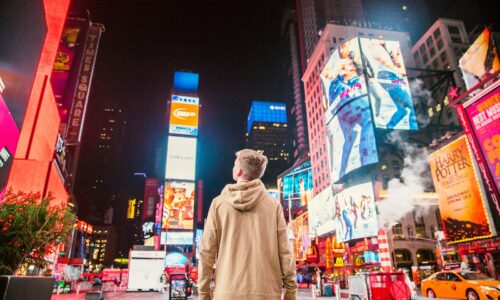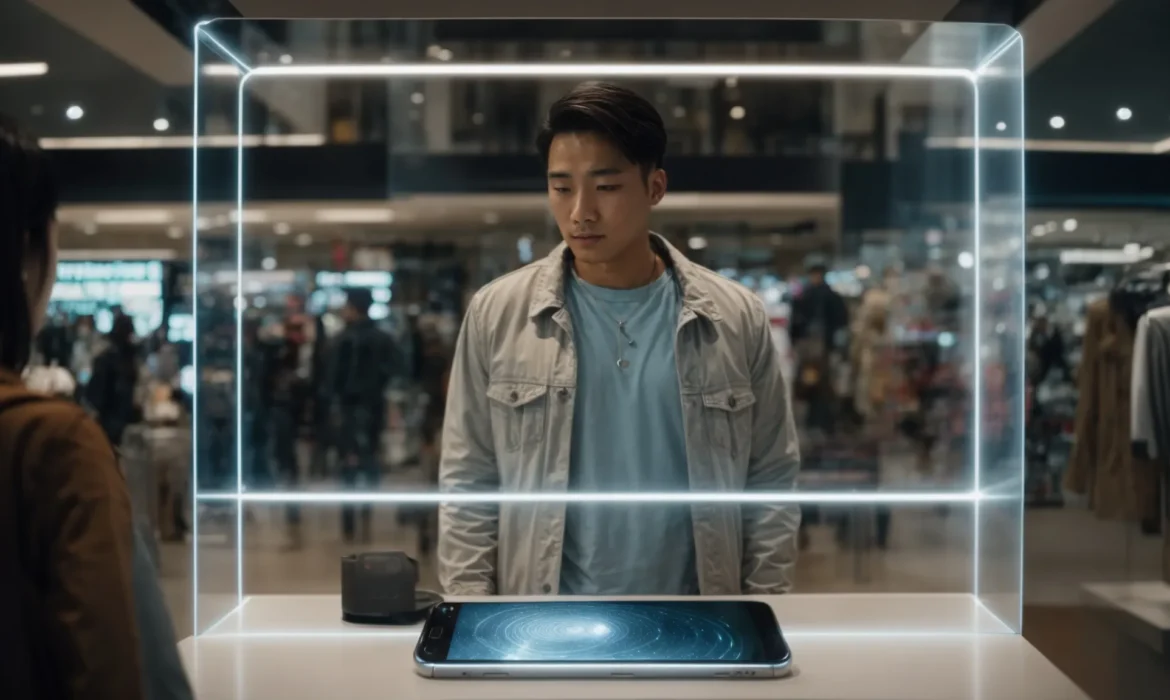
Next-Level Marketing: The Impact of AR in Advertising
Imagine stepping into a world where the line between the tangible and the digital blurs, a place where billboards spring to life and products whisper their stories directly into your heart.
This is the promise of augmented reality (AR) in the realm of advertising, a tech-infused canvas where brands paint their stories in the very air around us.
As brands strive to capture the capricious attention of consumers, AR emerges as the magician’s wand, transforming passive observers into active participants in a marketing ballet.
The enchantment of AR in advertising not only elevates the sensory experience but also cements brand memories in the minds of consumers in ways previously relegated to the domain of fantasy.
Keep reading to discover how this spellbinding blend of reality and imagination is shaping the future of marketing.
Key Takeaways
- Augmented Reality Is Transforming Advertising by Merging the Digital and Physical Worlds to Create Immersive, Interactive Experiences
- AR in Advertising Increases Engagement by Transforming Passive Viewers Into Active Participants, Enhancing Brand Interaction and Memory Retention
- Real-World AR Campaigns Show the Potential of This Technology to Turn Everyday Tasks, Like Shoe Shopping or Furniture Buying, Into Engaging Adventures
- Overcoming Technical Limitations and Ensuring User Accessibility Are Crucial for the Widespread Adoption of AR in Marketing Strategies
- The Future of AR in Marketing Hints at Even More Seamless Integration of Sensory Experiences, Personalized Shopping, and AI-driven Interactive Advertising
Blending Reality With Imagination: AR’s Role in Modern Advertising

Picture this: A world where the whispering boundaries between what is genuine and what springs from the wells of creativity merge into one seamless experience.
This isn’t merely a distant dream but the beating heart of modern advertising, courtesy of Augmented Reality (AR).
As an enthusiast of this transformative era in marketing, I’ve seen firsthand how AR isn’t just reshaping our visual landscape; it’s rewriting the very DNA of how we connect with brands.
From the chrysalis of traditional advertising, a vibrant new form has emerged, painting the air with interactive experiences that captivate and engage.
As we embark on this journey through the evolution of advertising with Augmented Reality and uncover the key benefits of weaving AR into marketing strategies, let’s anchor our imaginations and prepare to navigate the enchanting world where reality and invention dance in unison.
The Evolution of Advertising With Augmented Reality
Recalling the days when billboards and screen ads reigned supreme sparks a realization of how far we have journeyed into the age of augmented reality. This dramatic shift, akin to the transformation from silent films to talkies, has introduced a world where advertisements leap from the static and become entities that interact with us in real time, cohabiting our space.
My exploration into the fabric of AR’s impact on advertising has shown me its power to transcend the physical barriers of traditional media. It’s like watching a flower bloom in fast-forward; what once was a bud of potential has blossomed into a dynamic tool that transforms the consumer experience into something almost magical, inviting the audience to step into a story rather than merely observing it.
With each passing moment, the narrative of advertising evolves, guided by the hands of augmented reality technology. This progression isn’t just about adding layers to our visual field; it’s a profound reimagining of engagement, where brands breathe life into their messages, allowing them to walk among us, whispering tales of wonder, innovation, and connection.
Key Benefits of Integrating AR in Marketing Strategies
At the forefront of AR’s remarkable journey into the heart of marketing strategies lies its unparalleled ability to enhance brand interaction: Augmented Reality transforms passive viewers into active participants. By infusing the physical world with digital enhancements, AR creates a bridge where consumers can engage with a brand in a deeply personal and immersive manner.
| Stage | Traditional Advertising | AR Enhanced Advertising |
|---|---|---|
| Engagement Level | Static Reception | Interactive Exploration |
| Consumer Experience | Observational | Participatory |
| Impact on Memory | Passive | Dynamic and Lasting |
Moreover, this innovative form of marketing has shown tantalizing promise in elevating brand memory retention: Augmented Reality, through its interactive and personalized content, plants a seed in the minds of consumers, growing into a tree of remembrance that far outshadows traditional advertisements. As I delve into the intricacies of AR-powered campaigns, it becomes clear that the opportunities for creating memorable experiences are only limited by the creativity of those wielding this tool.
Lastly, AR in advertising heralds a new era of measurable engagement and actionable insights. Unlike the nebulous results often associated with conventional methods, augmented reality offers precise data on user interactions and dwell times, empowering brands with the ability to tailor their strategies in real-time. Embarking on this path, I recognize how AR not only captivates the imagination but also furnishes marketers with the lens to view the effectiveness of their creations through a crystalline perspective.
As we unfurl the vibrant tapestry of Augmented Reality in contemporary advertising, the journey only grows more captivating. Let’s leap into how AR crafts immersive brand odysseys that resonate deeply with our senses.
Creating Immersive Brand Experiences Through AR
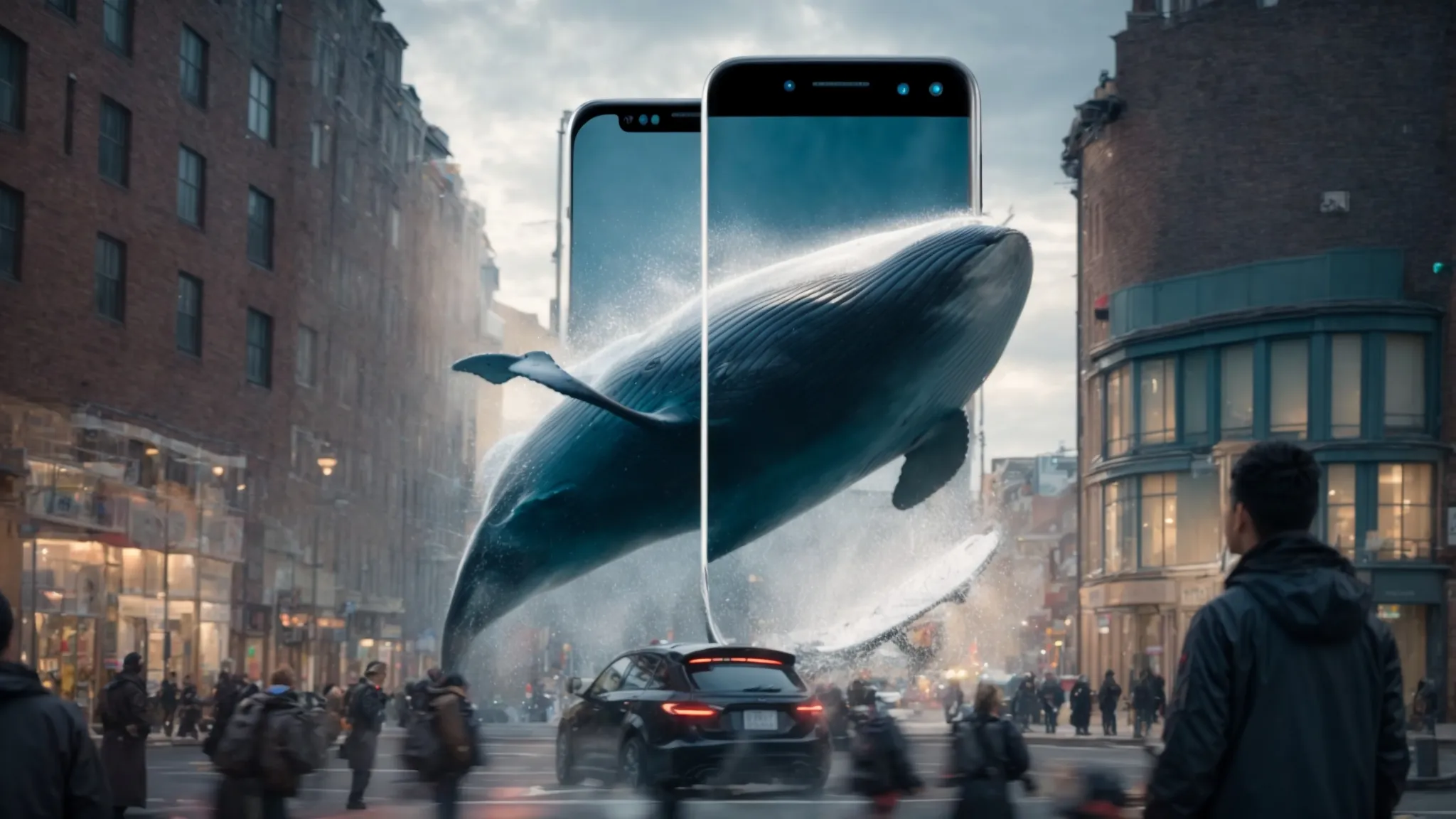
Embarking on a deeper exploration of Augmented Reality’s prowess in advertising compels me to turn the spotlight towards the real-life maestros of this domain—those campaigns that have not just floated ideas into the stratosphere but tethered them firmly to the ground with success stories that resonate.
As we voyage into the realm of AR-enhanced marketing, the fusion of ingenuity and technology paves the way for strategies that breathe motion into static ideas, transforming passive observers into architects of their own experiences.
The narrative I endeavor to weave in the coming sections showcases not only the unparalleled creativity of AR campaigns that have set benchmarks but also lays out a blueprint for designing AR encounters that leave indelible marks on the canvas of our minds.
Case Studies of Successful AR Campaigns
One of the narratives that left a profound imprint on my recollection is the story of a sneaker company that leaped beyond the screen. Through AR, customers could virtually try on footwear, a process that turned the mundane act of shoe shopping into an adventure, a testament to the ingenuity of AR in knitting dreams with reality.
Another campaign that resonates within the chambers of my memory involved a furniture giant, allowing customers to visualize how products would fit and look in their personal spaces. This not only shattered the confines of imagination but bridged the gap between possibility and reality, letting individuals craft their sanctuaries with a simple flick of their fingertips.
The culinary world also embraced the AR revolution, with a campaign that still dances on my taste buds. A renowned pizza brand catapulted the concept of ordering a meal into the realms of interactive gaming, turning a routine decision into a delightful escapade. This initiative showcased not just the versatility of AR but underscored its ability to transform the mundane into an extraordinary tale of engagement and entertainment.
Strategies for Designing Captivating AR Experiences
Navigating through the labyrinth of creative possibilities, my approach to crafting captivating AR experiences focuses on immersing users in narratives that resonate deeply with their senses and emotions. Nothing beckons the imagination like stepping into a story where you can touch, alter, and interact with the narrative fabric surrounding you. It’s akin to inviting someone into a dream, where the limits are defined by wonder and curiosity rather than the cold, hard edges of reality.
In my ventures, I’ve discovered the profound impact of integrating sensory feedback into AR experiences. Imagine the sensation of a breeze or the scent of a forest, all synthesized through clever technological means, making the digital world a mirror to our own yet boundlessly enchanting. This blend of tactile and olfactory elements with visual spectacle elevates the experience from merely impressive to truly memorable, etching it in the mind like a vivid daydream.
A pivotal strategy lies in the careful orchestration of mystery and discovery within these digital realms. Embedding easter eggs and hidden layers within an AR experience not only motivates users to explore but also imbues the journey with a sense of personal achievement and intimacy. It transforms passive absorption into an active quest, where each discovery feels like uncovering a treasure meant just for you, making the bond between brand and consumer uniquely personal and profoundly deep.
Stepping from the realm of immersive experiences, we now leap into the dynamic world of augmented ads. Here, interaction and engagement don’t just knock on the door—they burst through it.
Boosting Engagement and Interaction With Augmented Ads
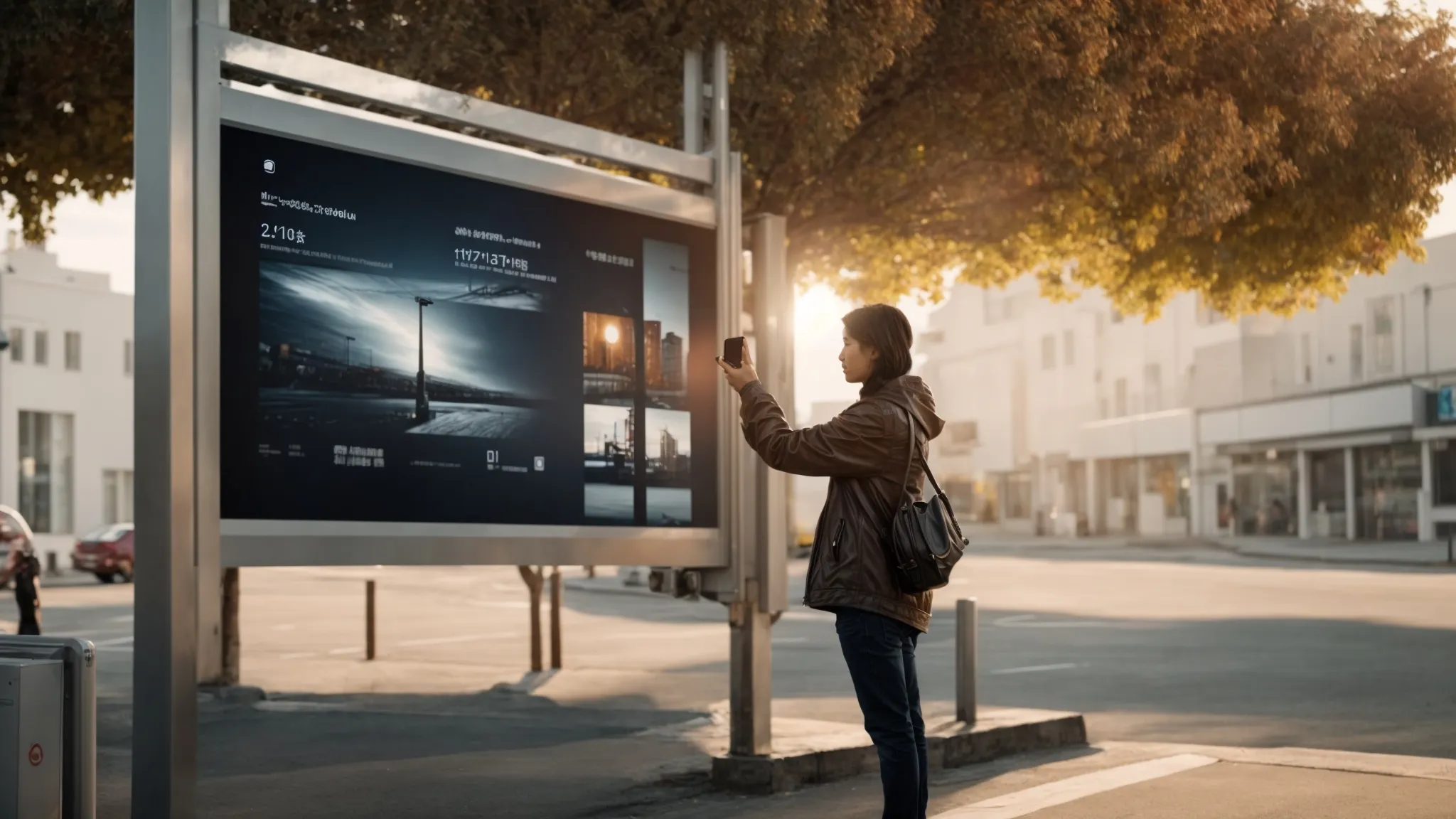
Embarking on the narrative of augmented advertising’s potential, we witness an age where passive spectatorship transforms into vibrant participation.
This isn’t a simple evolution; it’s a revolution in consumer engagement, ushered in by Augmented Reality (AR).
Through the lens of AR, the once silent observers become the authors of their adventures, interacting with brands in a space that blends the physical with the digital.
This paradigm shift brings to light the ways in which AR not only invites but actively involves the audience, turning casual glances into immersive journeys.
As we delve into the mechanics behind this transformation and the methods employed to chart the depths of engagement, we unlock the secrets to measuring not just attention, but interaction and immersion.
How AR Transforms Passive Viewers Into Active Participants
In a transformation as profound as turning stones into diamonds, Augmented Reality (AR) redefines audience engagement by granting viewers the magical wand of interaction. No longer mere spectators, individuals are ushered into a dynamic dance with content, bringing it to life through their actions and choices. This shift heralds a new epoch where the journey from observer to participant is but a blink away.
The essence of this metamorphosis lies in AR’s unique ability to layer the digital atop the tangible, creating a playground where every interaction is imbued with wonder and discovery: An evolution which, at its core, seeks not just to show, but to involve and resonate on a deeply personal level. The juxtaposition of these worlds, seamless and intuitive, invites an intimacy between brand and consumer previously unattainable, crafting tales where every participant holds the pen.
| Experience | Before AR | After AR |
|---|---|---|
| Viewer’s Role | Passive Observer | Active Participant |
| Engagement Type | One-way Interaction | Dynamic Exchange |
| Memory Impact | Transient Impression | Enduring Connection |
Thus, through the lens of AR, the narrative of advertising undergoes a profound revision: Turning the passive canvas of traditional ads into interactive portals that beckon with tales yearning for personal touch and exploration. In this space, every glance promises the beginning of a journey, inviting viewers to step through the looking glass into realms where their action paints the story, fostering engagements that linger far beyond the initial contact.
Measuring Consumer Engagement Through Interactive Features
In unraveling the narrative of augmented advertising’s impact, my gaze turns to the metrics that spotlight consumer engagement. The juncture where augmented reality melds digital wonder with physical realms offers a canvas ripe for interpretation, not merely through eyeballs and clicks but through interactions that tell tales of curiosity and connection.
My journey into this augmented space revealed a trove of data unseen in traditional analytics. Employing AR’s interactive features, from virtual try-ons to spatial exploration, unfurled insights into how deeply a user wades into the experience. This metric, a beacon in the murk of digital marketing, illuminates the strength of engagement, charting paths previously obscured by the sheer veneer of views.
Peering closer, the strands of engagement weaved by AR’s interactivity did more than just capture attention; they fostered relationships. Through the lens of augmented reality, measuring engagement transitions from counting fleeting visits to understanding the depth of each interaction. This paradigm shift not only refines the approach to consumer analytics but redefines the essence of connection in the digital age.
Navigating the vibrant landscape of augmented ads leads us to confront its formidable counterpart: the hurdles of AR advertising execution. Our journey takes a thrilling twist as we gear up to tackle these challenges head-on.
Overcoming Challenges in AR Advertising Implementation
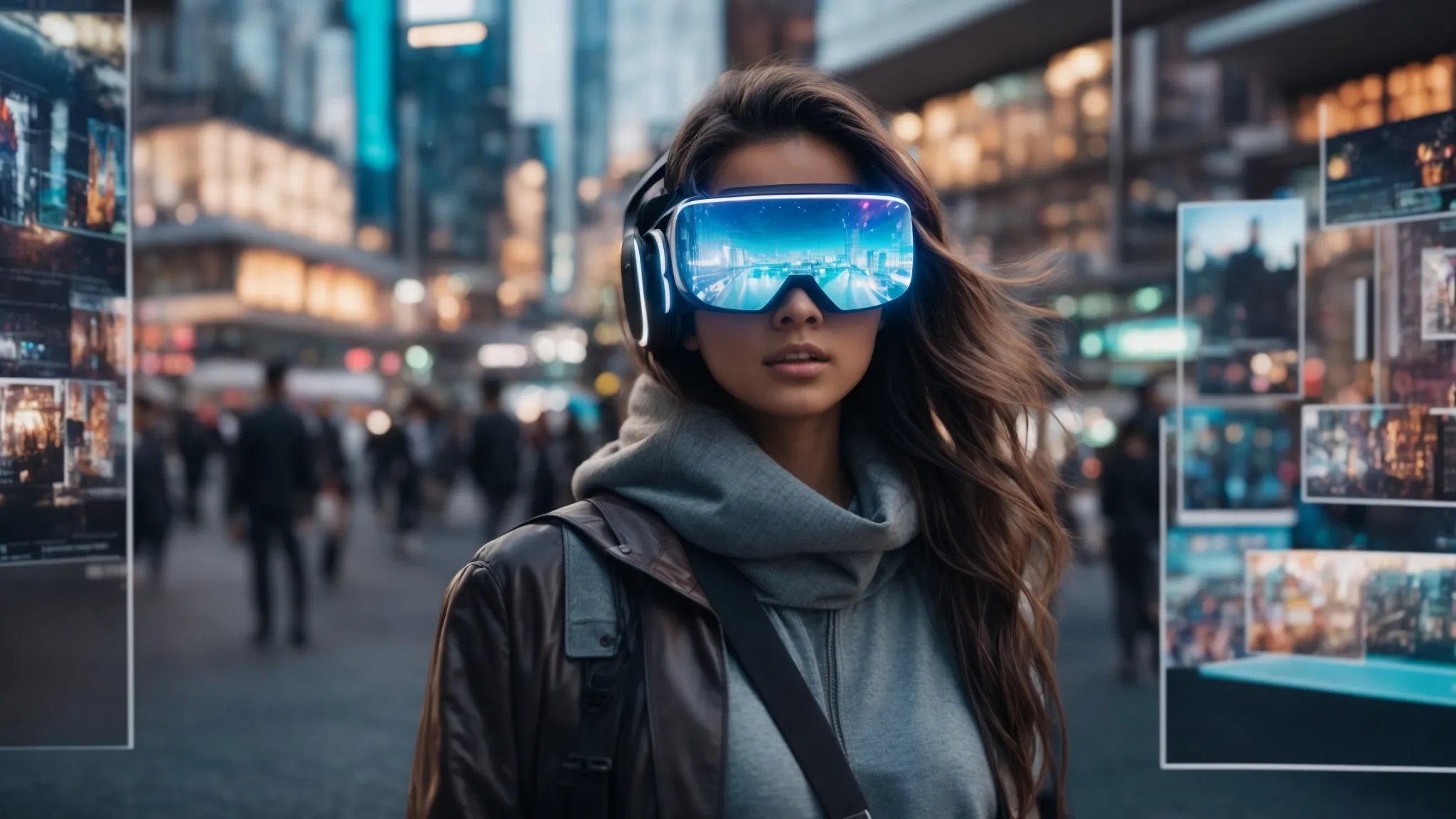
Stepping into the realms of Augmented Reality (AR) in advertising invites not just innovation but its share of hurdles that require nimble navigation.
My journey through the integration of AR into marketing strategies has laid bare the dual challenge of tackling technical limitations and ensuring user accessibility—a twin set of barriers that stand as gatekeepers to the potential boundlessness AR promises.
Equipped with insights garnered from this odyssey, I now turn my focus to unraveling best practices for seamless integration into marketing campaigns.
This step marks a transition from recognizing issues to actively seeking solutions, laying the groundwork for overcoming obstacles that, while daunting, are far from insurmountable in the grand narrative of next-level marketing.
Tackling Technical Limitations and User Accessibility Issues
The bridge over the chasm separating the potential of AR in advertising from its full realization involves addressing the twin specters of technical limitations and user accessibility. Embarking on this endeavor, I confront the reality that not every consumer has access to the latest devices or high-speed internet, a disparity that casts shadows on the universality of AR experiences.
To mitigate these technical bottlenecks, I advocate for the development of AR solutions that are adaptable across a spectrum of devices and connection speeds. This inclusivity not only broadens the audience reach but ensures that the immersive magic of AR advertising is not a privilege of the few but a shared treasure. My journey unravels as follows:
- Evaluating the landscape of current technological capabilities and pinpointing areas that hinder seamless AR engagements.
- Collaborating with tech innovators to forge solutions that render AR experiences more fluid and less resource-intensive.
- Implementing user-friendly platforms that simplify AR interactions, ensuring that the wonder of augmented reality is accessible to all, regardless of technical prowess or gadgetry.
This odyssey of overcoming is not undertaken solo. I enlist the partnership of tech giants and creative minds, forging ahead with a unified goal: to dismantle the barriers that confine the splendor of AR advertising, paving the way for a future where every interaction is an open door to awe and engagement.
Best Practices for Seamless Integration Into Marketing Campaigns
In charting the course towards best practices for seamlessly blending Augmented Reality (AR) into marketing campaigns, I’ve discovered the importance of starting with a story. Crafting a compelling narrative that naturally incorporates AR technology allows consumers to glide smoothly into interactive experiences without feeling jolted by the transition. This narrative weaving not only captivates but also simplifies the complex, making the extraordinary feel familiar and accessible.
My engagement with the labyrinth of AR integration has taught me the value of testing and feedback loops. Prior to unveiling an AR experience to the masses, it’s crucial to pilot the journey with a select audience. Their interactions, coupled with their candid feedback, act as a compass, guiding adjustments that refine the experience, ensuring it resonates with both the heart and the mind of the broader audience. This iterative process, though painstaking, enriches the campaign’s fabric, threading it with insights that only hands-on engagement can reveal.
Finally, I’ve learned the significance of scalability in embedding AR within marketing endeavors. As my explorations deepened, I recognized that AR experiences should not only dazzle but also adapt. Designing campaigns that can grow and evolve with technological advancements and user expectations ensures longevity in the fast-paced digital arena. This foresight invites innovation while maintaining a grip on the reality of diverse consumer landscapes, ensuring every interaction is as seamless as stepping into a new world without leaving the comfort of the familiar.
The journey through the labyrinth of AR advertising reveals a turning point. Ahead, the horizon of augmented reality’s future in advertising gleams with untold promises.
The Future Outlook of Augmented Reality in Advertising

Gazing into the future, the horizon for Augmented Reality (AR) technology in marketing is ablaze with innovation.
My anticipation grows with each advancement, projecting a world where marketers harness AR’s full potential, crafting experiences that transcend today’s imagination.
This voyage into the unknown holds the promise of transforming engagements, where every interaction weaves a deeper connection between brand and consumer.
As we edge closer to this new dawn, the anticipation of unveiling the next chapter in the AR saga fills me with a fervent curiosity and eagerness to explore the innovations poised to redefine the landscape of marketing.
: Innovations on the Horizon for AR Technology in Marketing
Peering into the crystal ball of augmented reality’s future in marketing unveils a panorama where the tactile and the digital intertwine more seamlessly than ever before. On the threshold of this evolution, I envision AR technology that layers reality with hyper-realistic textures and sensations—where the rustle of pages in a virtual catalog or the warmth of a morning sun through a simulated window becomes palpable. This leap towards sensory immersion promises to transform the ephemeral into the unforgettable, making every brand interaction a more profound encounter.
The journey ahead also whispers of AR’s potential to democratize personalized shopping experiences, transcending the barriers of geography and time. Imagine a scenario where fitting rooms and product showrooms are not confined to the physical realm but can be summoned to the comfort of one’s living space at a whim. This not just erases the line between online and offline shopping but also crafts a canvas for inclusivity, where the richness of choice and convenience is a right, not a privilege.
Lastly, I foresee a future where AR and Artificial Intelligence (AI) converge, weaving a fabric of interactive advertising that not only recognizes the user but anticipates their desires. In this symbiosis, advertisements become less about broadcasting a message and more about engaging in a dialogue, tailored to the individual’s preferences and previous interactions. This evolution from static to dynamic, from general to personal, heralds a new era of advertising where brands don’t just speak; they listen, learn, and adapt.
Conclusion
The impact of Augmented Reality (AR) in advertising marks a transformative shift, heralding a new era of next-level marketing that significantly enriches the consumer-brand engagement.
As AR bridges the gap between the physical and digital realms, it evolves marketing strategies from passive viewership to dynamic participation, thereby fundamentally altering the narrative of advertisements.
By offering immersive experiences that blend reality with interactive digital enhancements, AR not only captivates the imagination but also enhances brand interaction, elevates memory retention, and delivers measurable engagement insights.
Successful AR campaigns across various industries showcase the technology’s ability to turn mundane consumer interactions into memorable adventures, suggesting a future where marketing is not just about exposure but about creating deep, personal connections.
As we navigate towards this future, the integration of AR in advertising promises a landscape where creativity and technology converge to offer unprecedented levels of engaging, sensory-rich, and personalized brand experiences.







